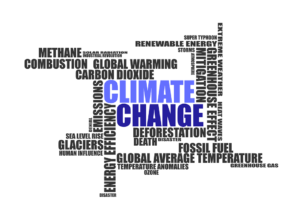Perdue Moves to Make School Meals Great Again
In 2010, Congress passed the bipartisan Healthy Hunger-Free Kids Act (part of what some might describe as part of the Obamas’ legacy). The law included ‘new school meal guidelines, supported by the Institute of Medicine, which introduced more whole grains, lower sodium levels, and more fruits and vegetables into our nation’s school lunches.’
FoodCorps is a bicoastal organization (in Oregon and New York) which launched the following year, and has been on the front lines “connecting kids to healthy food in schools” as these guidelines have been implemented.”
On May 1st, the USDA announced a relaxation of these guidelines, slowing the timeline for schools to comply with certain regulations and loosening the standards for others, ultimately allowing schools to serve measurably unhealthier food to students in our public schools.
At a time when one in three of our nation’s children are overweight or obese, FoodCorps, along with iEat Green and other public health communities’ believe these rollbacks are a mistake for our children and our country. Listen to Bhavani talk about the healthy school lunch program on Brian Lehrer’s NPR show.
Superfoods Trending Yet Fair Trade Wins Again
“If the superfood plot were a bit more predetermined, you might expect açaí to go the way of quinoa. When the protein-rich grain spread to supermarket aisles and started to appear in fast-casual restaurants, it moved out of reach for the Bolivian farmers whose dependence on the grain made it famous in the first place. The story with açaí is not so simple. Here, surprising parties become heroes and scoundrels as the coveted berry changes hands in different ways.
E.P.A. Dismisses Members of Major Scientific Review Board
Climate Science has long been debated, especially by those largely affected by regulations enacted to mitigate issues caused by, let’s face it, climate change. However, not until recently and in large part due to the agenda of our current administration, the efforts of local, state, and federal agencies, and our greater scientific  community, have not been so desperately disputed. That is, our elected EPA official, Scott Pruitt, has been recorded to protest against scientifically proven results that carbon-dioxide pollution is not mostly man-made!
community, have not been so desperately disputed. That is, our elected EPA official, Scott Pruitt, has been recorded to protest against scientifically proven results that carbon-dioxide pollution is not mostly man-made!
When the change in administration occurred, many noticed the burial of global climate change information webpages. Just recently, the “EPA sidelined one of their websites” aimed at teaching schoolchildren about climate change, which a public watchdog group determined as part of the agency’s efforts to align the online content with the new administration’s values.
“President Trump has directed Mr. Pruitt to radically remake the E.P.A., pushing for deep cuts in its budget — including a 40 percent reduction for its main scientific branch — and instructing him to roll back major Obama-era regulations on climate change and clean water protection. In recent weeks, the agency has removed some scientific data on climate change from its websites, and Mr. Pruitt has publicly questioned the established science of human-caused climate change.” -NY Times, EPA Dismiss Significant Members of Review Board
More Salt May Increase Energy Output and Increase Weight Loss Yet Still Linked to Health Problems
“The animals were getting water — but not by drinking it. The increased levels of glucocorticoid hormones broke down fat and muscle in their own bodies. This freed up water for the body to use.
But that process requires energy, Dr. Titze also found, which is why the mice ate 25 percent more food on a high-salt diet. The hormones also may be a cause of the strange long-term fluctuations in urine volume.
Scientists knew that a starving body will burn its own fat and muscle for sustenance. But the realization that something similar happens on a salty diet has come as a revelation.
People do what camels do, noted Dr. Mark Zeidel, a nephrologist at Harvard Medical School who wrote an editorial accompanying Dr. Titze’s studies. A camel traveling through the desert that has no water to drink gets water instead by breaking down the fat in its hump.
One of the many implications of this finding is that salt may be involved in weight loss. Generally, scientists have assumed that a high-salt diet encourages a greater intake of fluids, which increases weight.
But if balancing a higher salt intake requires the body to break down tissue, it may also increase energy expenditure.
Still, Dr. Titze said he would not advise eating a lot of salt to lose weight. If his results are correct, more salt will make you hungrier in the long run, so you would have to be sure you did not eat more food to make up for the extra calories burned.
And, Dr. Titze said, high glucocorticoid levels are linked to such conditions as osteoporosis, muscle loss, Type 2 diabetes and other metabolic problems.”

Comments are closed.